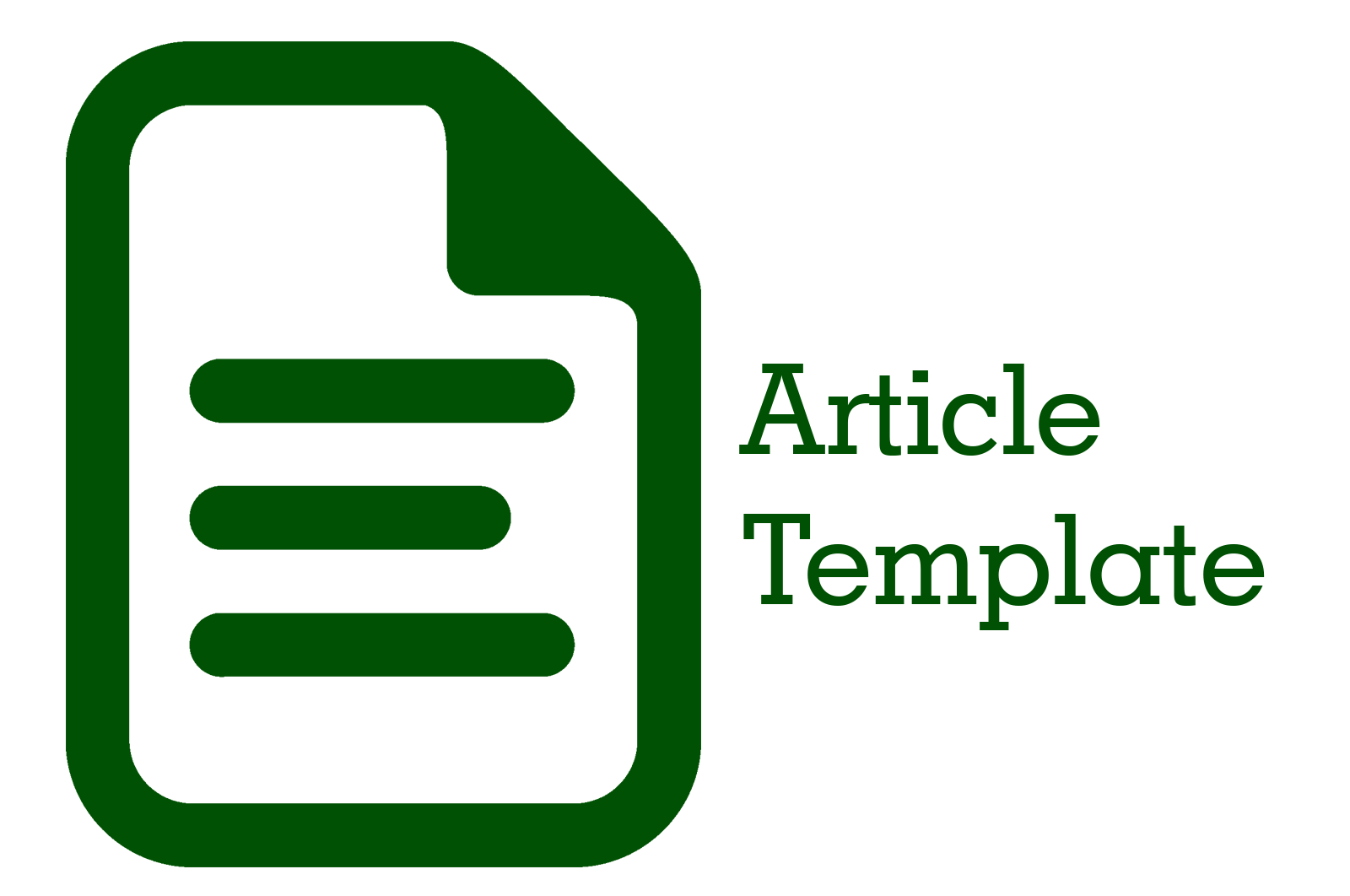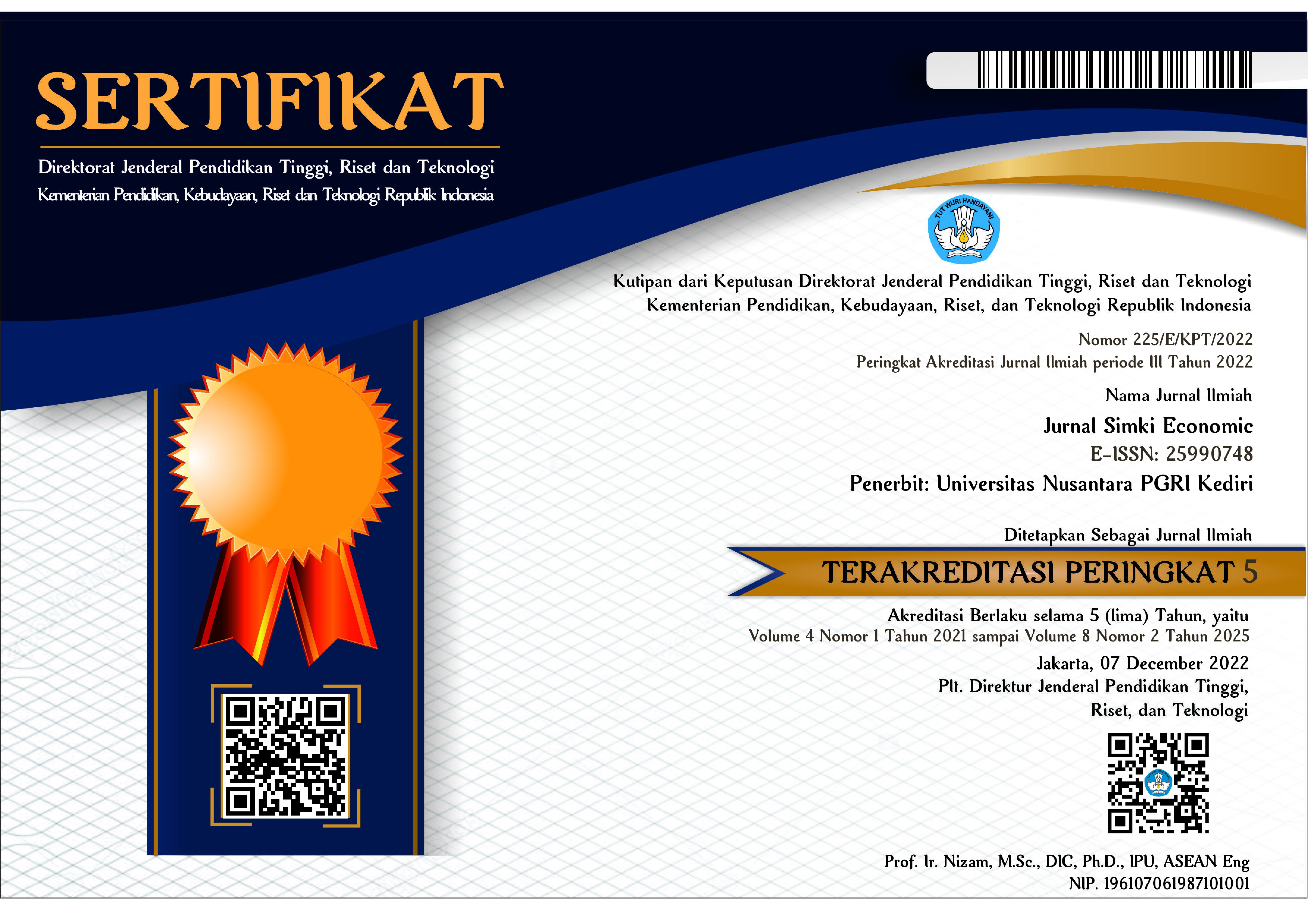Analisis Sektor Basis dan Pertumbuhan Sektoral Kota Tangerang
 Abstract views: 882
,
Abstract views: 882
,
 PDF (Bahasa Indonesia) downloads: 866
PDF (Bahasa Indonesia) downloads: 866
Abstract
Regional development is one of few factors of national development. Regional economic growth leads to regional development. This study intends to determine whether regional potency has a substantial impact on Tangerang City's economic growth from 2015 to 2019. The research methods employed in this study are as follows: Location Quotient (LQ), Dynamic Location Quotient (DLQ), and analyzing the leading, prospective and mainstay sectors in the future. Based on the results of this study, potential sectors in Tangerang City are manufacturing industries, transportation and logistics, and the company services sector. Two of three potential sectors are supported by RPJMD of Tangerang City, are manufacturing industries, transportations, and the logistics sector
Downloads
References
Achmad, D., & Hamzani, U. (2015). The Role of Regional Superior Sectors in Creating GDP Value Added, Employment Opportunity, Regional Productivity and Human Development Index. Procedia - Social and Behavioral Sciences, 211, 953–959. doi:10.1016/j.sbspro.2015.11.126.
Agusalim, L. (2016). Potensi dan Proyeksi Ekonomi Makro Kota Tangerang. Media Trend, 11 (2): 99-116. DOI: 10.21107/mediatrend.v11i2.1439.
Badan Pusat Statistik Kota Tangerang Selatan. (2020). Produk Domestik Regional Bruto Kota Tangerang Menurut Lapangan Usaha 2016-2020. Tangerang: Badan Pusat Statistik Kota Tangerang.
Bagaskara, A. D. dan Arifin, Z. (2017). Analisis potensi Sektor Unggulan dan Pergeseran Struktur Perekonomian di Kabupaten/Kota Provinsi Banten Tahun 2011-2015. Jurnal Ilmu Ekonomi, 1(1).
Cao, R., Zhang, A., & Wen, L. (2018). Trans-regional compensation mechanism under imbalanced land development: From the local government economic welfare perspective. Habitat International, 77, 56–63. doi:10.1016/j.habitatint.2018.04.001.
Chernis, T., Cheung, C., & Velasco, G. (2020). A three-frequency dynamic factor model for nowcasting Canadian provincial GDP growth. International Journal of Forecasting, 36(3), 851–872. doi:10.1016/j.ijforecast.2019.09.
Firmansyah, M. F. (2021). Analisis pertumbuhan ekonomi dalam penentuan basis ekonomi, isu ketimpangan serta lingkungan di Jawa Barat periode 2010-2019. Jambura Economic Education Journal, 3(1). https://doi.org/10.37479/jeej.v3i1.8292.
Jetter, M., Mösle, S., & Stadelmann, D. (2019). Cursed by no coast: How regional landlockedness affects income within countries. Economics Letters. doi:10.1016/j.econlet.2019.04.030.
Karunia, D. S. (2017). Pertumbuhan Ekonomi di Indonesia. In Skripsi Fakultas Ekonomi serta Bisnis Universitas Muhammadiyah Surakarta.
Kuncoro, M. dan Idris, A. N. (2010). Mengapa Terjadi Growth Without Development Di Provinsi Kalimantan Timur? Jurnal Ekonomi Pembangunan, 11(2): 172-190.
Lee, H., & Itakura, K. (2018). The welfare and sectoral adjustment effects of mega-regional trade agreements on ASEAN countries. Journal of Asian Economics, 55, 20–32. doi:10.1016/j.asieco.2017.09.001.
Lin, J., & Rauch, F. (2020). What future for history dependence in spatial economics? Regional Science and Urban Economics, 103628. doi:10.1016/j.regsciurbeco.2020.103628
Liu, X., Mattoo, A., Wang, Z., Wei, S.-J.. (2020). Services Development and Comparative Advantage in Manufacturing. Journal of Development Economics (2020). doi: https://doi.org/10.1016/j.jdeveco.2019.102438.
Masduki, U. (2016). Sektor Ekonomi Potensial di Kota Tangerang Selatan. Jurnal Liquidity, 3(2): 183-189.
Novita, N., Sari, R. P., & Anwar, R. (2021). Identifikasi potensi bidang ekonomi basis serta non basis kota metro. Jurnal Agriovet, 3(2), 105. https://doi.org/10.51158/agriovet.v3i2.456.
Sugiyono. (2018). Metode Penelitian Manajemen, Pendekatan: 1. Kuantitatif 2. Kualitatif 3. Kombinasi (Mixed Methods) 4. Penelitian Tindakan (Action Research) 5. Penelitian Evaluasi. In CV. ALFABETA (Vol. 6).
Suparmoko, M. (2020). Konsep Pembangunan Berkelanjutan Dalam Perencanaan Pembangunan Nasional serta Regional. Jurnal Ekonomika serta Manajemen, 9(1), 39–50. Retrieved from https://journal.budiluhur.ac.id/index.php/ema/article/download/1112/814.
Ulfa, S. & M. (2017). Proses Penelitian, Masalah, Variabel, serta Paradigma Penelitian. Jurnal Hikmah, 14(1), 62–70. Retrieved from http://jurnalhikmah.staisumatera-medan.ac.id/index.php/hikmah/article/download/10/13.
Copyright (c) 2022 Safira Amora, Dini Yuniarti, Agus Salim

This work is licensed under a Creative Commons Attribution 4.0 International License.














